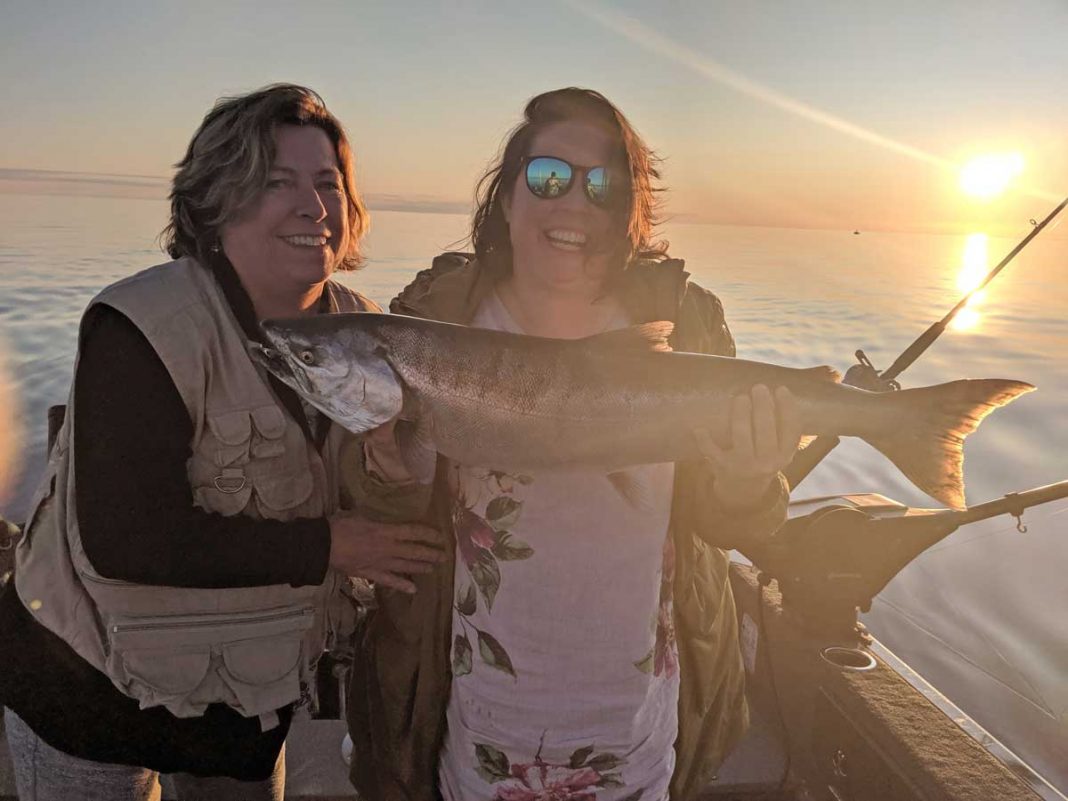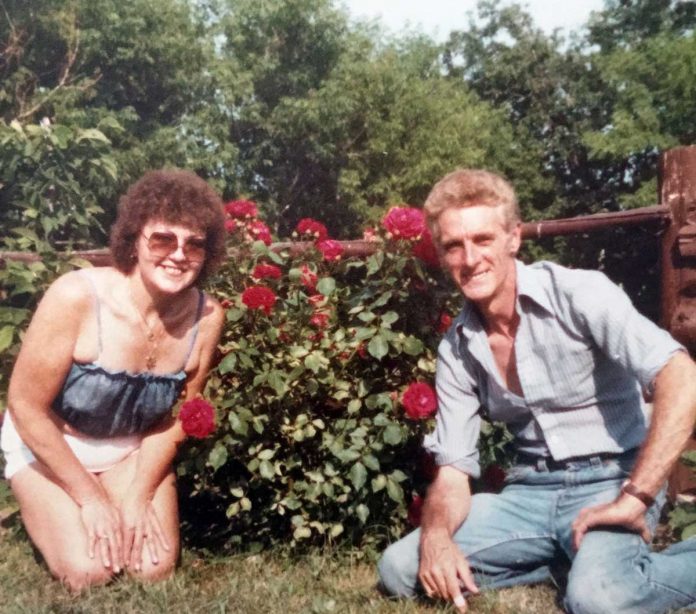EDITOR’S NOTE: Dave Patterson is a pro staff angler, member of Ontario Fishing Guys and columnist of Get Reel in the North. Follow the Ontario Fishing Guys on Instagram, Facebook or visit their website at OntarioFishingGuy.com.
LAKE HURON—For some, it’s the acceleration of a motorcycle; for others, it’s the thrill of the hunt. Me? I’m after the next big hook-up. No, I’m not talking about Tinder, but fish of the salmonid variety.
My fishing partner Aaron Case, ‘Bone,’ often says that I’m not too fond of fishing. He knows me very well. I’m fond of catching, and in particular, salmon.
For me, salmon is the pinnacle of the freshwater fishery. The slashing runs that can peel off hundreds of feet of line at once and the aerial assault to shake the hook both get my heart racing. However, it is the calculations, the analytics of salmon fishing that I enjoy the most.
It said that 90 percent of the fish are caught by 10 percent of the anglers. Never a more accurate sentence was spoken when concerning salmon fishing. It has taken me 40 years, but I feel that I’m closing in on the 10 percent, Bone may tell you otherwise on some days.
There is a myriad of factors that go into catching salmon, and for the purpose of this article I will stick to the basics.
One of the most common questions that I receive is, ‘where do I fish?’ While seemingly the simplest, it is also the most difficult one to answer. Salmon is a transient fish that is continuously on the move in search of their next meal. I know in the most basic sense anglers are looking for my ‘spot,’ but in reality I don’t have one, but more of a general area.
My advice to anyone wanting to know the spot to fish is to go where the salmon are. No, this is not a wise-guy answer but a general rule I follow. As I said previously, salmon are only after one thing, food. Find the food and you will find the spot to fish for salmon. Seek out structures in the form of shoals, pinnacles and drop-offs that the bait will hang around. I seldom care about how many fish I’m marking on my graph. I care more about how much bait I’m marking. It is pointless to fish an area devoid of bait. Search out the food source and the salmon will be around them.
Once you have found the baitfish, it is time for lure selection.
I could go into a plethora of lure options, however, I will not go into types for the simplicity factor and just stick to colour.
Colour plays the most crucial role in my selection of a lure. I know from experience that dark colours tend to work the best in our part of Lake Huron. If you do not already know how the light spectrum works in water, I will give you a quick reference. Black, green and blue (shades or combinations of them, i.e. purple) are visible at the greatest depths. Red, orange and yellows have limited visibility the deeper you go.

With the colour spectrum in mind and generally bait down below 60 feet, the colour choice is simple. Go dark!
Now it is time to put the lure down. How deep do you go?
Salmon like specific temperatures, from the low 40°F (4°C) to mid 50°F (10°C) range is where you will generally find them. This can be tricky to locate the precise water column unless you are fortunate enough to have a Fish Hawk temperature gauge.
As a general rule, when I’m first setting up I will set my lines 80’ and 60’ on one downrigger and 70’ and 50’ on the other. I find this spread of lines covers the most likely water that the salmon will occupy. When I start marking fish and bait, I will adjust the downriggers accordingly.
The final steps involve speed and line distance.
I perform a lot of downrigger depth adjustments, so that factor directly affects the distance that I like to have my lures set back from the boat. I tend to run long leads of 65’ up to 120’ behind the cannonball. The long lead gives me time to adjust up or down in depth if I mark fish or bait. If I was to run the lead to short the time it takes for me to drop it down or up to target a marked fish, it would be too late.
Trolling speed is the final chapter in this simplified equation. I always like to start at 2.5 mph and adjust accordingly. If I begin to mark fish and have no takers, I drop my speed down to 2 mph. I’m generally inclined to go slower first before increasing the speed. Over the years, I have had much more success using a slower troll than I have trolling at a faster speed.
Finally, never troll in a straight line. This applies to all species of fish but really stands out with salmon and trout. Try to troll a large sweeping ‘S’ pattern. The reason behind this is two-fold. Your lures are travelling through clean water (water that your boat has not passed over directly), and the S pattern continuously varies the speed of your bait.
While these are all general rules that I follow, nothing is set in stone. Experiment with techniques, change your speed, lure colour and depth.
Getting out on the water makes for a fantastic day. Taking home a salmon for the barbecue makes for a great dinner. However, experiencing the rush of a salmon is what it’s all about for me.
Tight lines,
Dave





